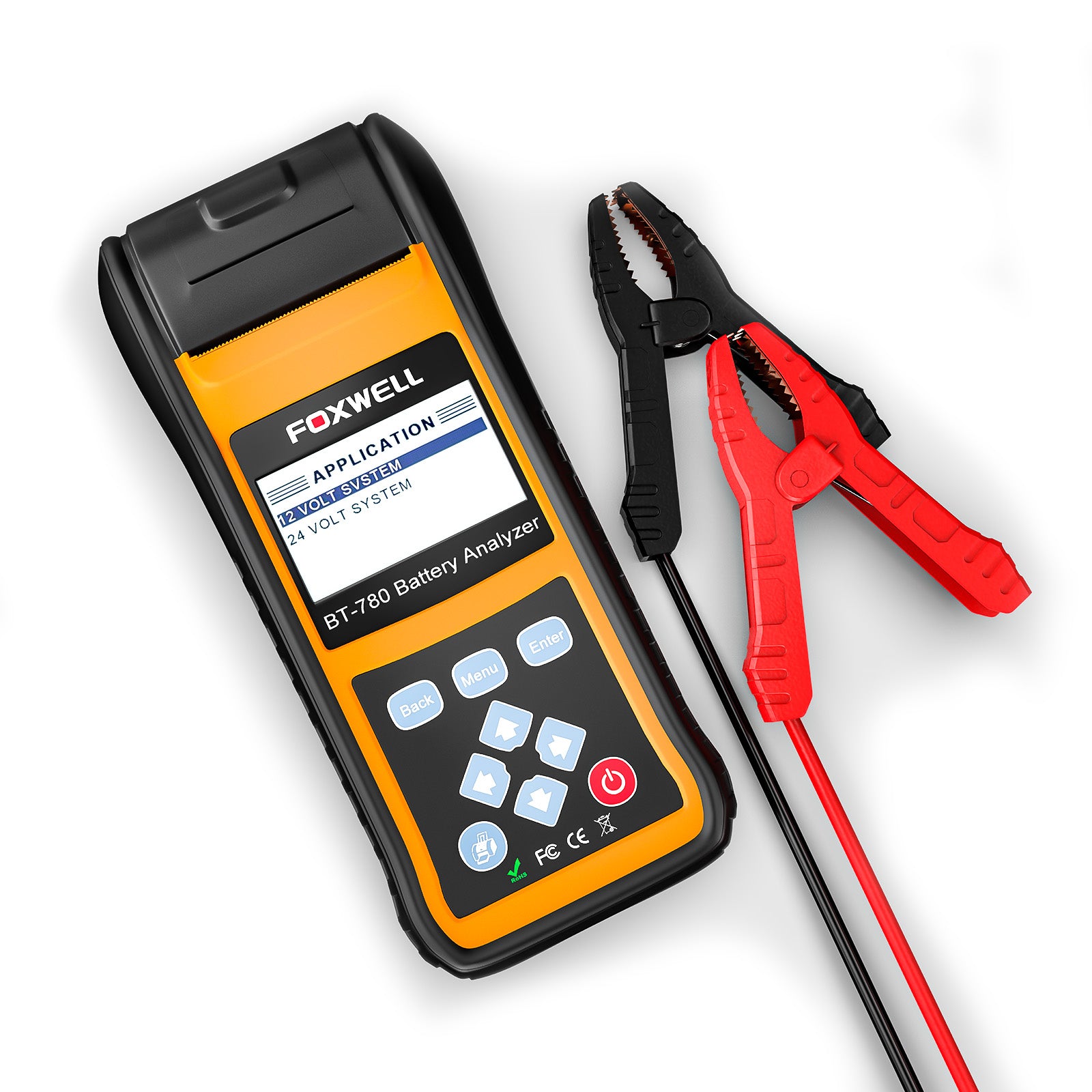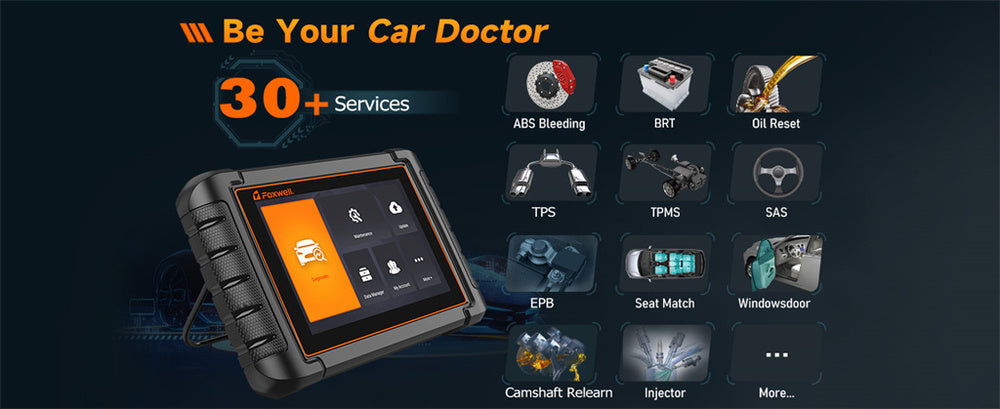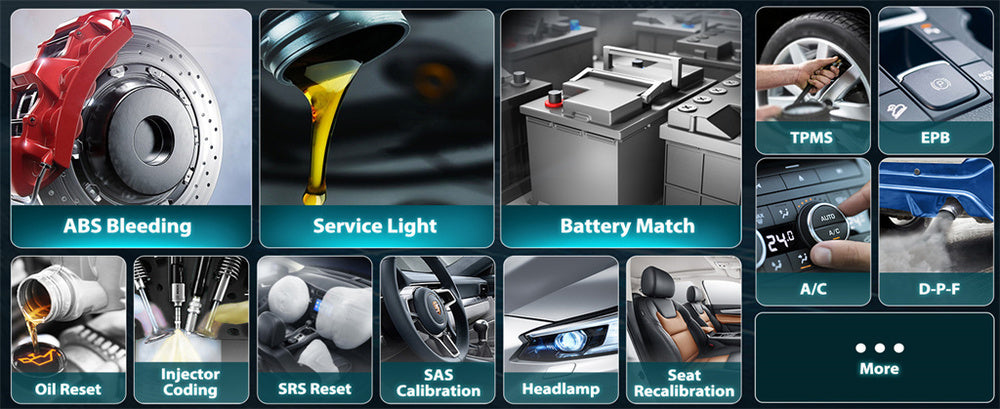If you drive a diesel vehicle, you are likely familiar with its diesel particulate filter (DPF). This filter is integral in keeping emissions clean, trapping soot, and cleaning your exhaust.
However, over time, the DPF may become clogged up. To prevent performance issues and potential engine damage, this accumulated soot must be periodically burned away through a process called regeneration.
While your vehicle is designed to clean itself through an automatic process called regeneration, which can occur while driving or parked, this process often fail due to short trips that prevent the engine from fully warming up. When automatic regeneration doesn't occur, a manual intervention becomes necessary.
I will walk you through how to manually initiate DPF regeneration, including what conditions need to be met, the required tools, and safety considerations.
Whether you prefer DIY solutions or wish to avoid expensive trips to the mechanic, this guide is here to help you complete it successfully.
Step-by-Step Guide to Manually Start DPF Regeneration
Your diesel particulate filter (DPF) filters all the harmful gases from your exhaust. Still, when it gets clogged up with dirt and particles, it needs an excellent deep cleanout - here's how you can manually initiate DPF regeneration:
- Before Beginning: Review Your Vehicle Manual: Before undertaking any action, first consult your car's owner manual.
Each car maker has its own system for dealing with DPF regeneration; therefore, it's crucial that you follow their instructions as much as possible.
- Assure Proper Engine Conditions: Before beginning any exercise routine, ensure your engine has reached its average operating temperature.
Also, verify that at least a quarter of your fuel tank remains full; you'll need the extra energy to burn away soot deposits.
- Apply a Diagnostic Tool: To begin regeneration, an OBD2 scanner will likely be necessary. Plug it into the port under your dashboard and navigate the scanner's menus.
- Locate and Navigate the Tool's Menu: Once connected, locate and select the DPF service or regeneration option under the Engine or Emissions section of the Tool's menu.
- Launch Regeneration: To initiate regeneration, follow the prompts on your scanner. Keep your engine running while the regeneration occurs - don't turn off your vehicle while it works.
- Monitor the Process: Regeneration can take anywhere from 10 to 30 minutes, depending on how much soot has built up. Keep an eye on the scanner to make sure everything is going smoothly.
- Complete the Process: Once the scanner tells you the regeneration is done, turn off the engine and let it cool down before hitting the road again.
Conditions Required Before Starting Manual DPF Regeneration

Prior to manually regenerating your DPF, you must fulfill a few conditions to ensure its smooth running.
1. Check and Resolve Related Fault Codes
This is arguably the most important step. The vehicle's computer will prevent regeneration if it detects active fault codes. Before anything else, use your diagnostic tool to scan for codes. Here are common DPF-related codes and what they mean:
- P2002 (DPF Efficiency Below Threshold): This indicates the DPF is severely clogged or there's a leak in the filter system. A forced regeneration might help, but if it fails, the DPF may need professional cleaning or replacement.
- P2459 (DPF Regeneration Frequency): This code triggers when the DPF requires regeneration too often. Common causes include short trips that prevent passive regeneration, a faulty temperature sensor, or a leaking fuel injector introducing excess soot.
2. Troubleshoot the "Requirements Not Fulfilled" Error
If your scanner displays a message like "requirements for manual regeneration have not been met," here are the most likely culprits:
- Engine/Oil Temperature Too Low: Ensure the engine is fully warmed up. Drive the vehicle on a highway for 15-20 minutes if necessary.
- Fuel Level Too Low: As mentioned, a quarter tank is typically the minimum.
- Active Fault Codes Present: As detailed above, these must be addressed first.
- Faulty Sensors: A malfunctioning DPF temperature sensor or differential pressure sensor will provide incorrect data to the ECU, halting the process.
- Frequent Interruptions: The vehicle's history of aborted regeneration cycles may require a specific drive cycle to reset before a manual regen is allowed.
3. Ensure Proper Engine Operating Temperature
Your engine must be warmed up. Trying to regenerate with a cold engine is like trying to make dinner in an oven—it won't work and will produce unsatisfying results.
4. Verify Adequate Fuel Level
As soon as your engine starts up again, closely examine your fuel gauge. Be sure your tank is at least a quarter full; regeneration requires additional fuel to increase exhaust temperature enough to burn away soot deposits.Running low could cause the process to fail or halt midway.
5. Choose a Safe Location and Vehicle Setup
- Avoid Confined Spaces: Never conduct DPF regeneration in an enclosed garage. The process produces extremely high exhaust temperatures and fumes that could build up there. Always work in a well-ventilated, open area.
- Secure the Vehicle: Ensure your vehicle is parked on a level surface with the transmission in park (or neutral for manual), and the parking brake firmly engaged - this will keep everything secure while the process runs.
Tools and Equipment Needed for Manual DPF Regeneration

To manually regenerate your DPF filter, here is what will be necessary:
-
OBD2 Diagnostic Tool: To begin this process effectively, an OBD2 scanner such as the FOXWELL NT710 is essential. Its user-friendly design works with most vehicles.
For heavy-duty trucks and buses with engines such as Cummins, CAT, Detroit, Paccar, or International, a more specialized scanner like the international truck diagnostic scanner Foxwell HD500 is recommended, as it provides reliable DPF regeneration support along with full-system diagnostics.
- Keep Your Vehicle Owner Manual Close At Hand: Keep your vehicle's owner manual handy to prepare for any steps it may require.
- Protective Gear: When working with high temperatures and exhaust fumes, gloves and safety glasses should always be worn for safety.
- Fire Extinguisher: Just in Case. As regeneration involves high temperatures, it is wiser to be safe than sorry.
These tools will assist in getting your work completed safely and effectively.
Safety Tips for Manual DPF Regeneration
Maintaining safety when manually initiating DPF regeneration is paramount, given its complex process of high exhaust temperatures and potentially hazardous emissions release. Here are a few essential safety guidelines and precautions you should be mindful of:
- Avoid Confined Spaces: Never conduct DPF regeneration in an enclosed garage or space due to geneProcesshigh exhaust temperatures that release particulates and gases that could become hazardous in such enclosed environments. Always complete this procedure in a well-ventilated, open environment for maximum safety.
- Keep Away From Exhausts: During regeneration, exhaust systems can reach temperatures as high as 600degC (1118degF). Avoid standing too near an exhaust outlet to protect yourself and avoid potential burns and injuries caused by hot gases.
- Monitor the Process ContiProcess: As soon as you've begun DPF regeneration, monitor your vehicle and diagnostic Tool to ensure the process is preprocessing as anticipated, and be prepared to intervene quickly if anything seems amiss.
- Have a Fire Extinguisher Near: Although rare, DPF regeneration carries the risk of fire. By having an extinguisher nearby, you can quickly respond to any unexpected situations.
- Follow All Manufacturer Instructions: Always abide by the specific instructions from your vehicle manufacturer, as each vehicle may have specific procedures or precautions that must be observed.
Understanding the Costs: DIY vs. Professional Service
While this guide empowers you to perform a manual regeneration yourself, understanding the professional costs highlights the potential savings. The figures below are estimates based on industry sources; always obtain a quote for your specific vehicle.
- Professional Manual Regeneration: Having a dealership or shop perform a forced regeneration typically costs between $100 and $300 in labor [1]. This is often comparable to the one-time cost of a capable DIY scanner.
- Professional DPF Cleaning: When regeneration fails, a deep clean is needed. Specialized shops charge between $250 and $600 (or more) for this service, which removes hardened ash
- DPF Replacement: This is the most expensive outcome. Replacement costs can range from $2,500 to over $8,000 for parts and labor, making preventive maintenance critically important
When Regeneration Isn't Enough: DPF Cleaning and Replacement
While manual regeneration is a powerful tool for clearing soot, it has its limits. The DPF also traps incombustible ash, which cannot be burned off. Over time, this ash accumulates and can physically block the filter.
If you find that manual regeneration repeatedly fails, or if fault codes like P2002 return immediately afterward, your DPF likely requires a deeper intervention:
Professional DPF Cleaning: This is the next logical step. Specialized shops use advanced equipment to remove both soot and hardened ash from the filter. Methods include:
Thermal Cleaning: Baking the filter in an oven to burn off residues.
Pneumatic Cleaning: Using high-pressure air and vibration to dislodge debris.
Chemical Cleaning: Flushing the filter with specialized solvents.
A professional cleaning can often restore the DPF to like-new condition at a fraction of the replacement cost.
DPF Replacement: In severe cases where the filter is cracked, melted, or damaged beyond repair, replacement is the only option.
Recognizing when to move from a DIY regeneration to seeking professional cleaning services can save you significant time and money, and prevent long-term damage to your engine.
Conclusion
Manual DPF regeneration can be simple. By following these steps and prioritizing safety, you can start DPF regeneration manually and keep your DPF and engine healthy and efficient.
Regular attention paid to your DPF can save costly repairs and ensure your diesel vehicle runs efficiently - meaning that the next time your filter needs cleaning, you know exactly what steps to take!
FAQs
Can I regenerate my DPF filter myself?
Yes, you can regenerate your DPF filter yourself using an OBD2 scanner and following the proper steps. Ensure your vehicle meets the necessary conditions, such as the engine being warmed up and the fuel tank being at least a quarter full.
How do I manually start DPF regeneration?
To manually start DPF regeneration, connect an OBD2 scanner to your vehicle, navigate to the DPF regeneration option in the scanner's menu, and follow the prompts to initiate the process. Make sure the engine is running and all conditions are met.
How many times can a DPF be regenerated?
A DPF can typically be regenerated multiple times, depending on the condition of the filter and how well it's maintained. However, over time, the filter may wear out or become damaged, requiring replacement.
How often does DPF regeneration occur?
There's no fixed schedule. It depends on your driving habits. Frequent short trips that don't allow the engine to fully warm up will trigger regeneration more often (e.g., every 300-500 miles/480–800 km). Long highway drives promote passive regeneration and may reduce the need for active cycles.
Can I do a DPF forced regeneration at home?
Yes, using a compatible OBD2 scanner like the Foxwell NT710, you can perform a forced regeneration at home. Ensure safety precautions are followed: work in a well-ventilated area, avoid confined spaces, and keep a fire extinguisher nearby.
How long does a manual DPF regeneration take?
Regeneration typically takes 10–30 minutes, depending on the amount of soot buildup and your vehicle's engine temperature.
How long should a DPF last?
With proper maintenance and regular driving that allows for complete regeneration cycles, a DPF can last between 100,000 and 150,000 miles (160,000 - 240,000 km) or more. Premature failure is often caused by oil ash accumulation from burning oil, or persistent clogging due to exclusively short-trip driving.







Leave a comment
This site is protected by hCaptcha and the hCaptcha Privacy Policy and Terms of Service apply.